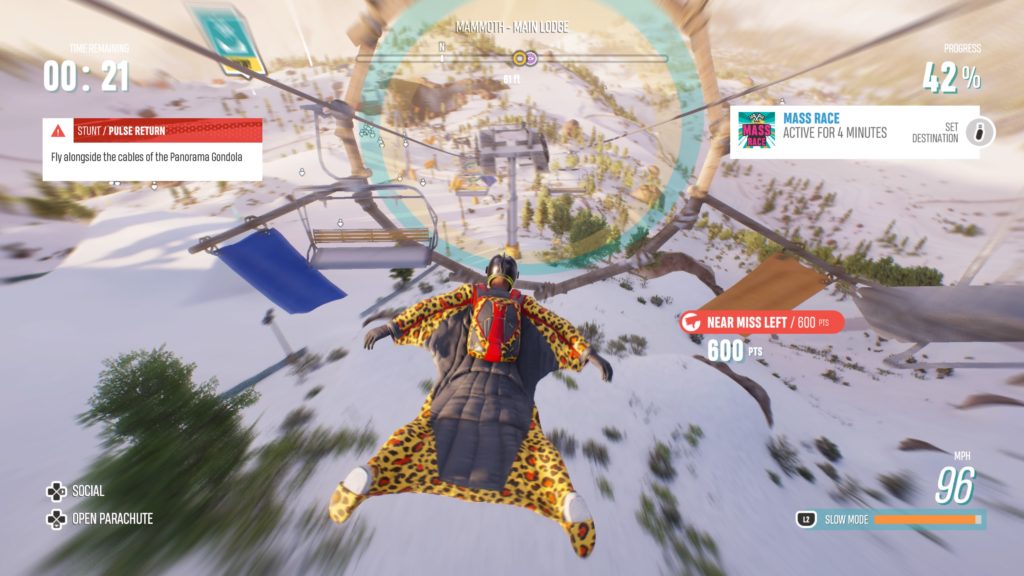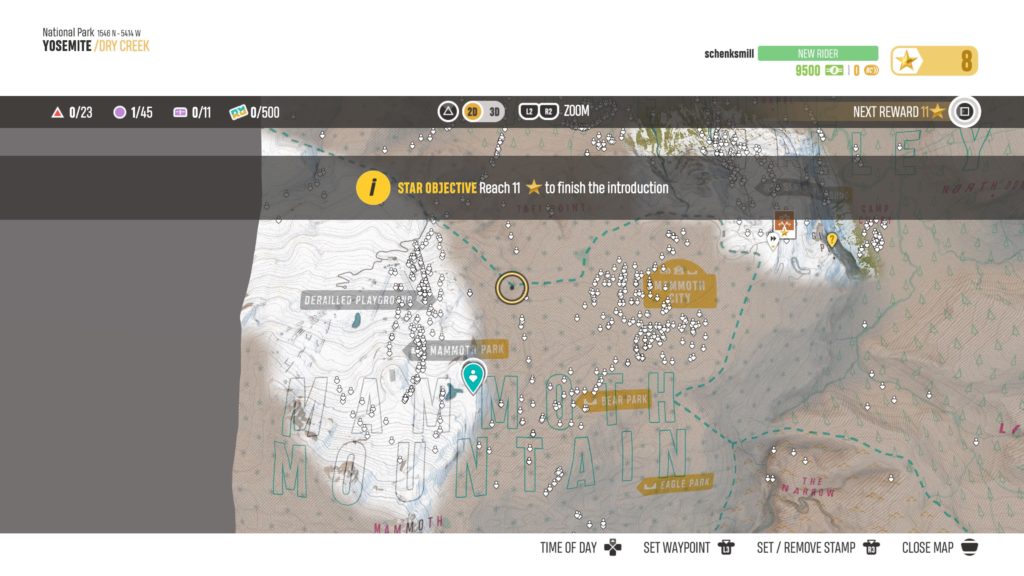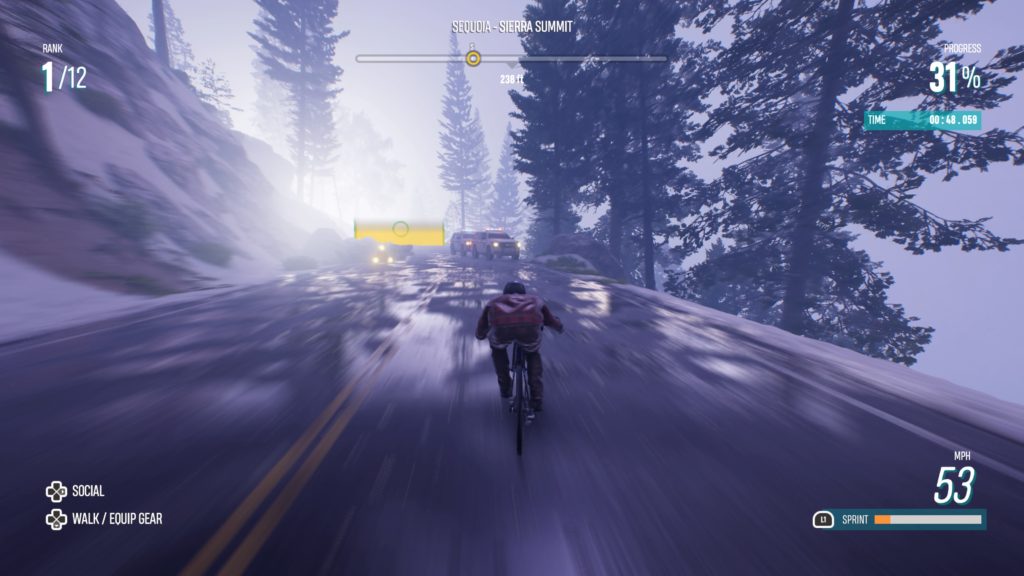- Genre: Action RPG
- Platform: PS5
- Also Available On: PS4
I don’t typically shelve games that I enjoy, let alone sequels to games I enjoyed. There’s often enough of something there to keep me moving. For Horizon, that’s very nearly the universe they’ve created, which is still just as gorgeous and interesting of a sci-fi experience as any game out there. However, I couldn’t shake the feeling that I was just playing the first game again. Not a sequel with iterations, not something with fresh ideas. Literally the original game. I put it down for a few days to give it some fresh air while I played a bit of Gran Turismo, but I’m finding myself at a point where I don’t have a drive to pick it back up, so at that point I might as well shelve it.
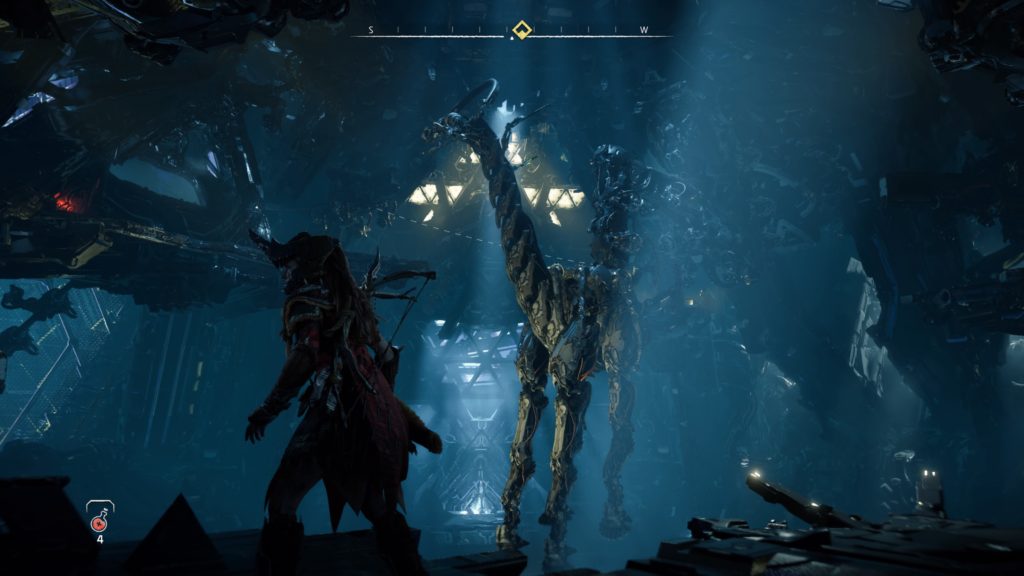
I could literally post my ramblings about the original as well as my ramblings about The Frozen Wilds and you could basically figure out what my pros and cons list for this game would be, and frankly that was always in the back of my mind as I got further into Forbidden West. Obviously the core gameplay was there, but problems started slowly creeping in.
The most immediate sorta issue you run into is with climbing. I played the original game immediately after Breath of the Wild and the inability to climb on any surface was already a bit of a detriment at the time. 5 years later it’s now a glaring problem. You can basically climb almost anywhere in this game, but you hit enough small points where you inexplicably can’t climb for it to be annoying that they didn’t just implement BOTW climbing. It being glaring is not helped by the fact that the cliffs literally now glow with climbing markup.
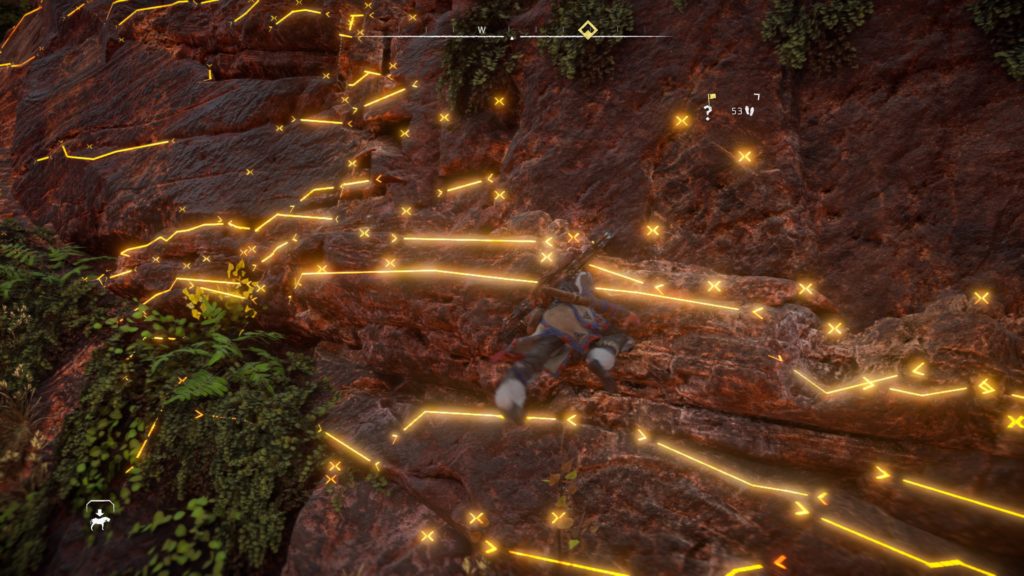
I’m not exaggerating about that. As a developer, I get why they probably chose to keep the systems similar between the original and sequel. However, as a developer I also understand that they had 5 years and a AAA budget – something I’ve rarely had access to – to implement better climbing, and their answer is a UX nightmare. It’s weird.
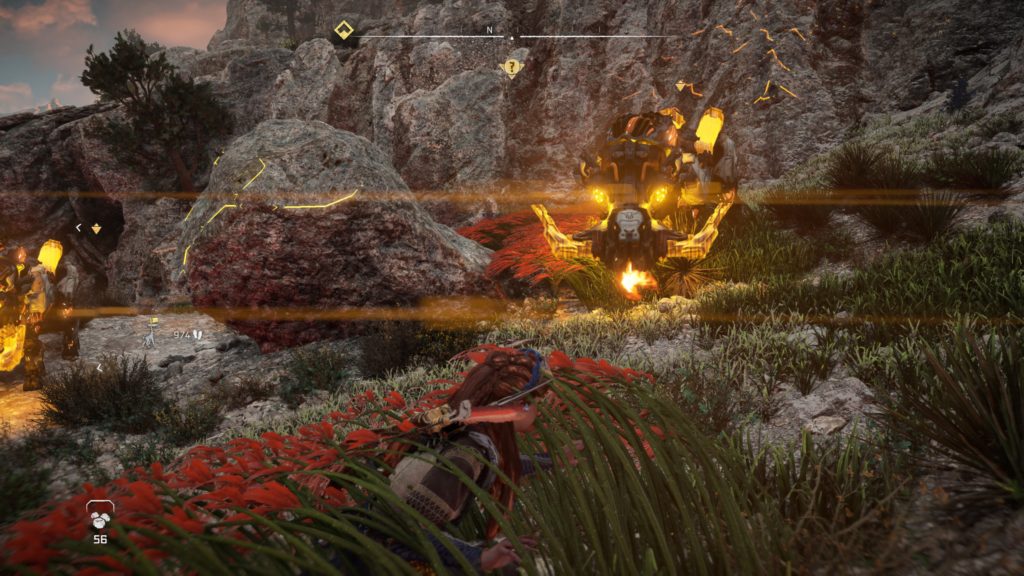
However, as the game went on I came to be generally bothered by the pace of combat slowing to a crawl. This game has the same general curve as the original. You start off able to stealth kill almost everything, then a couple of bigger things need a stealth swing + maybe a bow shot. As you get a bit further, you start seeing more larger mobs that require a bit more melee to take down. You then get into higher level variants of small machines that can’t be stealth killed and require more attacks. You get into larger mobs that can’t really be stunned by melee, so it loses its effectiveness. At a certain point, you’re just fighting level 30+ groups where you have to range everything and combat falls apart.
In general, there’s still a distinct lack of feel to the power curve of melee. There’s a few general skill tree upgrades, but with melee it’s kind of WYSIWYG. You don’t get to purchase cool versions of the melee weapon like you do ranged. You don’t get to do workbench upgrades like you do ranged weapons. You don’t really get much in terms of stealth damage upgrades once you hit the couple of skill tree points early in the game. It doesn’t feel like you really have a choice to do a melee or stealth-focused track, because you just kind of a hit an effectiveness wall with them, regardless of your upgrade path.
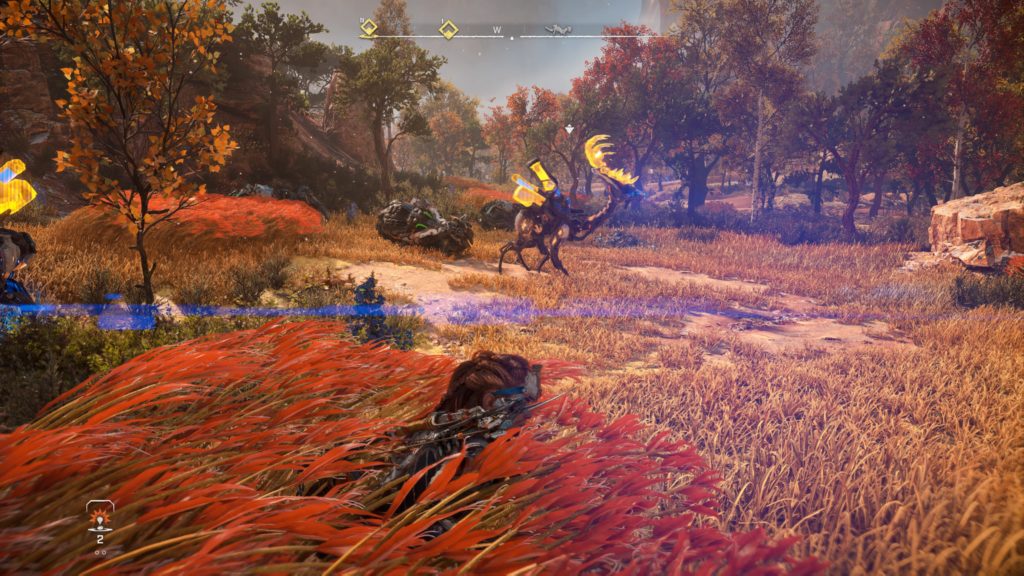
The thing about melee is that is it also generally puts you in a hugely disadvantageous position. It’s surprisingly easy for things to blow past you and out of camera range. Sometimes it’s because you did a big melee attack and went too far. Sometimes it’s because you dodged to the side and the machine blew past you. The problem for me is that it never felt like I had the tools to then really keep track of what was going on off-screen. There’s not any sort of system to let the camera lock or quick pivot to nearby targets. There’s not really an effective way to mark targets and have them be obvious in location off screen during heavy combat. What it ended up meaning again is that for fights of multiple enemies, melee wasn’t worth the danger or hassle and I was better off going to long range and keeping the entire group in front of me in view.
Ranged at least alleviates the problems somewhat and is pretty obviously still the more focused development track. There’s still a large array of ranged weapon types from bows of different effectiveness distances to trap launches to boomerangy type things. The elemental attack system is still also a lot of fun, with different machines having different weaknesses and benefits to the player. The big problem in the end is that ranged also hits an effectiveness wall that grinds combat to a half. When you’re doing hundreds of points of damage with an arrow and seeing a health bar barely blip down despite hitting weak points perfectly, it’s kind of grating. It’s one thing in a Souls-like when you’re basically hopping from boss to boss, but in a game where that starts to happen with general overworld trash it really slows progress to an unfun level.
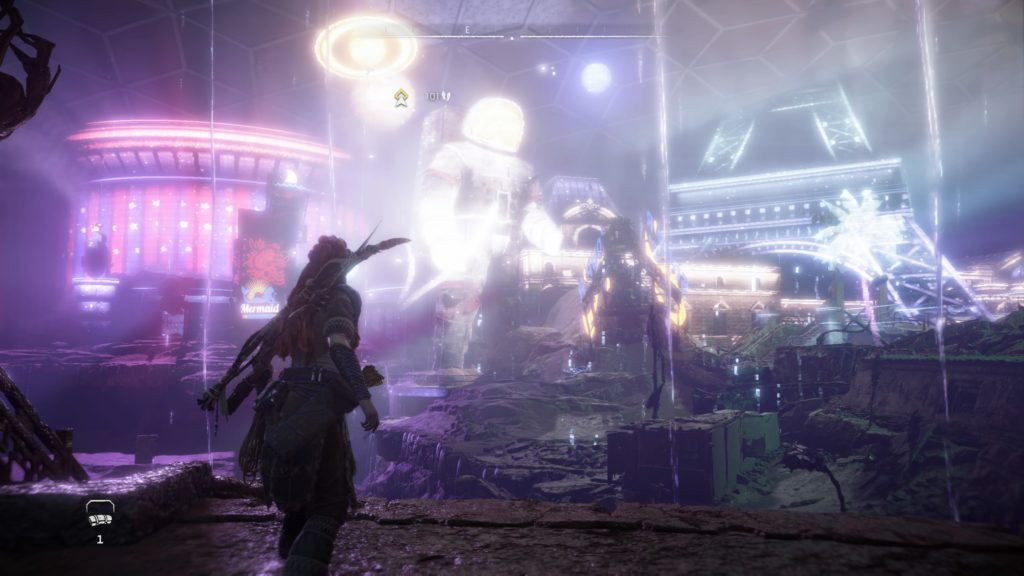
Ultimately what really did me in is that the game worked great for about 20 hours, then it just felt like I was slogging through it. It’s interesting to have a side quest about defending a town from raiders and machines for the first couple of times, but then it becomes uninteresting. It’s fun taking down a camp for the first half dozen times, but then it becomes uninteresting. It’s fun hitting the weakpoints on a Thunderjaw the first few times, but then it’s just the same. Since Forbidden West didn’t really separate itself from the original, this is a game that would have severely benefited from being a more condensed experience. Frozen Wilds was fun because it was a shorter experience separated by time from the original, so it was still fresh and fun when I finished it. As a sequel, this just didn’t work out the same way.


